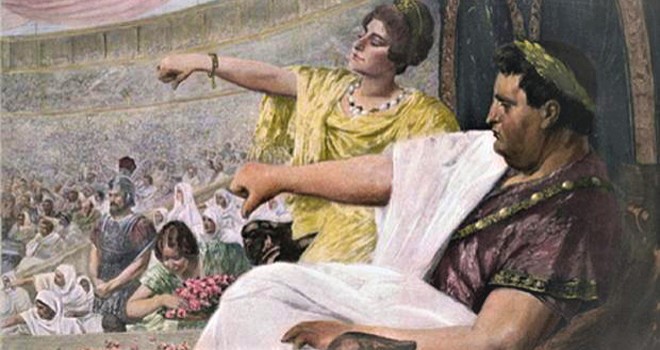
Emperor Nero is known as Nero Claudius Caesar Augustus Germanicus, he was born on 15 December 37 A.D and death 9 June 68 A.D Nero was the final Roman Emperor of the Julio-Claudian dynasty. He was adopted by his mother, Agrippina The Younger, and great uncle, Emperor Claudius, and Nero become Claudius’s successor. Nero became emperor with the help of the Praetorian Guard. Nero’s mother, Agrippina The Younger, controls Nero’s early life and she influences his all decisions until Nero doesn’t kill his mother. We’re going to see why Emperor Nero is the evil leader in human history Or was he?
Early Life Of Emperor Nero
Nero was the name he adopted later but he was born Lucius Domitius Ahenobarbus on the 15th of December 37 A.D here at Antium on the coast near Rome. He was the only son Gnaeus Domitius Ahenobarbus and Agrippina the Younger. He was a great-great-grandson of Augustus’. Nero’s grandparents had links to Julius Caesar.
When he was only 2 years old, his father Gnaeus Domitius Ahenobarbus died of edema and left a large chunk of his estate to his son, however, the heritage was taken from him by Emperor Caligula. Agrippina married Claudius in 49 A.D At that time Nero was adopted by his mother, Agrippina The Younger, and great uncle, Emperor Claudius, who by that time had succeeded Caligula following his murder by his guards.
Agrippina even killed her second husband. Some research papers claim that people saw Nero’s mother feed her husband poisoned mushrooms, resulting in his sudden death. Eventually, Nero would take the reigns as Emperor at the age of 16 after his great uncle died. Nero came to power when he was just 16 at an age when most youngsters are deciding which subjects they are choosing for the future. he was made ruler of half the world.
He was young, and a man who love peace not war, and loved music and the arts, traits the general public admired in their leader. Sometimes he was even claimed to be “kind”. Agrippina arranged the marriage between the 15-year-old Nero and Claudius is 13-year-old daughter Claudia Octavia. Around 51 A.D and 53 A.D Not surprisingly she had to have the law changed first to avoid any charges of incest.
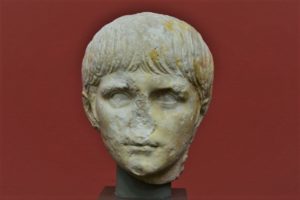
Nero had fallen madly in love with a woman called Poppaea Sabina. He had his official child bride Claudia Octavia but Sabina was a young and very beautiful woman. But she was Greek with an ex-slave. Nero wanted to keep news of the affair from his mother but he wanted to get rid of Octavia and marry Poppaea Sabina and when you want to divorce your wife and make a slave girl the Empress of Rome. It is a bit hard to keep it a secret.
After she became pregnant with Nero’s child, Nero decided to divorce his wife for Poppaea. Together Nero and Poppaea banished Claudia Octavia from Nero’s empire. However, Nero did not anticipate the backlash that came from his people. Many Roman citizens very much liked Claudia Octavia and protested severely the deportation of her from the empire. They carried an effigy of her through the city and the protests were so large that Nero briefly considered remarrying her to calm the people.
Nero feared that the mere reason the Romans saw him as their leader was his association with Octavia and her connection to past royal families. So after much consideration, Nero did the next best thing to remarrying his estranged wife – he had her killed. He hoped this is able to instill some fear and prove his strong leadership to the people. Claudia Octavia was put to demise in a traditional Roman Suicide Ritual on 8th June, 62 A.D.
How Agrippina The Younger Influence Nero
The real aristocratic blood came from his mother’s side. Nero’s story is about the woman who influenced him and central to that story is his mother Agrippina the ultimate pushy woman she created him she made him and in the end, she almond destroyed him. Agrippina was ferociously ambitious and well aware that the only way to power for a woman was through a husband or better still a son. she saw Nero as her passport to power.
Nero also shared the sadistic characteristics of his predecessor and kept the levels of terror at court just as high there were secret trials in private chambers. Suspects tortured in front of him just for the fun of it. Nero grew up knowing that anyone close to, could be murdered at any time. But the chief threat to his existence didn’t come from Claudius but from his third wife Messalina. The 7-year-old Nero became the pawn during a power struggle between two ruthlessly ambitious women. Statilia Messalina wanted her son to be the next Emperor after Claudius. Agrippina wanted it to be Nero both women were willing to fight dirty.
The next stage Agrippina was to tighten her grip on power by making strategic appointments. The military wasn’t allowed inside Rome so the Emperor had his own elite force called the Praetorian Guard. who were based here any aspirant contender for the imperial throne. who didn’t have their support didn’t stand a possibility. Usually, they were under the command of perfect.
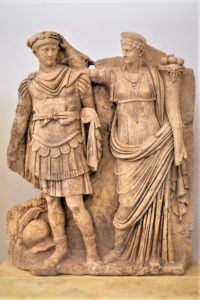
Agrippina created just one bus a tough strait speaking soldier called Boris. He and his fellow officers knew that they owed their loyalty to her and her son. Boris was to be one among the dual pillars of support for the teenage Emperor. Her second appointment was a masterstroke the most respected philosopher of his day Seneca was employed as Nero’s instructor and speechwriter with Burris and Seneca. Agrippina groomed the teenaged Nero for power.
Nero ordered that his mother be killed. A gradual falling out between the two had begun some time prior, eventually leading Nero to remove her face from Roman coins. By that time she had lost the respect of Nero’s advisors as well. There are so many, contradicting, and often singular, reasons why Nero ordered to killed his mother. But the most common reason is that Agrippina plotting to kill Nero. So, Nero said better I killed her first.
Nero ordered an accidental bump of her boat, hoping she may perish with the sinking ships. But unfortunately, she survived the preparatory attempt. Finally, he ordered a slayer to kill her and make it look like a suicide. This time she did not survive and she dies.
The Great Fire Of Rome
The Great Fire Of Rome starts on the evening of 18 July, 64 A.D. The fire blazed on the Aventine Hill in Rome, one of the seven hillsides that Rome is built on, overlooking the Circus Maximus. The fire burned for nearly 6 days before it might be somewhat controlled, only to reignite once thereafter and burn uncontrolled for another 3 days. Over a total of nearly 9 days, two-thirds of Rome has burned to the land. Just about 70% of the city was destroyed. Temples, homes, and markets all burned to the land.
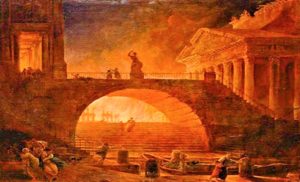
Nero, at the same time, was not actually in Rome. He was at his villa in Antium which is about 35 miles faraway from Rome, though he rushed back immediately upon hearing the news. Once back in Rome, Nero instantly opened his palace doors for the homeless people of Rome and offered them shelter and food. He was quick in his desire to begin rebuilding the city and conveniently, a new palace for himself called the Domus Aurea, which in Latin means The Golden House.
It was an extensive palace complex that would eventually take up nearly one-third of Rome. The construction of the new palace is what lead to many Roman citizens conjecture that Nero had ordered the Great Fire of Rome himself, a Crooked plan that would allow him to clear the land to build his dream palace while also allowing him to spin his public image by being the philanthropic ruler who opened his doors to his people when they needed help. Although he got the palace that he wanted, his image was irreversibly tarnished as the rumors spread quickly and escalated.
The cost of rebuilding Rome was high which forced him to devalue the imperial Roman currency by 10%. This is the first time ever in the Empire’s history. He reduces the weight of the Denarius and aureus.
Political Failure and Death
The rebuilding costs of Rome were high and forced him to devalue the imperial currency by 10%. Revolts all over in the Roman provinces of Judea and Britain were also escalating. Nero suspected that there were high-level conspiracies originating in the Senate to have him assassinated, which he decided he could only prevent by having them killed first. Nero’s grip on reality was loosening and his time was running out.
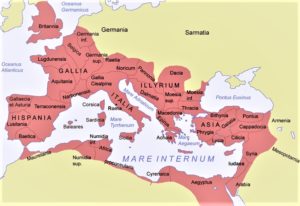
He had grown more distant from military decisions and completely did not answer an urgent rebellion in Gaul also as growing tensions in Africa and Spain. Finally, at their wit’s end, Eventually, a messenger arrived with the news that Nero had been declared an enemy of the state and had been sentenced to death in an ancient manner. Soon, everything Nero had done as emperor seemed to finally come to a head and his world began closing in on him. Many people believed it was him that started the Great Fire of Rome and that he had killed his mother, his first wife, and also rumors about he killed his second wife.
He’d never bothered to visit the military outposts and this lack of interest was coming back to haunt him but as rebellions broke out and his army began to defect. Nero seemed paralyzed. He simply sat at home unable to act then in June 68 A.D. The Emperor awakened one night to seek out the palace deserted this wasn’t a better sign his Praetorian guards had gone to a secret meeting of the Senate. The very Senate he’d given the power to was now turning its back on him cold hard reality finally sunk in Nero was on his own.
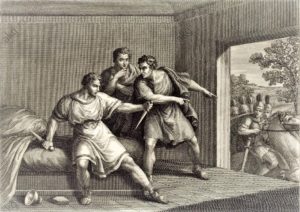
Nero attempted to escape the city that by now had completely turned on him. Then some roman soldiers approached and with the assistance of a slave. Nero decided to fall back on his favorite move killing but this time he took his own life on June 9th, 68 A.D. He stabbed himself through the throat his last words from his mouth were “what an artist dies with me”. He was thirty years and six months old. The last of the Julio Claudian line that stretched back to Augustus.
After Nero’s death, the Roman Empire went through one of its most tumultuous periods. It was pure and total lawlessness with multiple Emperors taking control of the imperial throne and getting killed before they could even do anything. It became referred to as the “Year of Four Emperors”. Historian Tacitus described it as “ a period rich in disasters. Even in peace, full of horrors”.
[…] for horse Thieving, not for robbing people. he is also very new in bushranging. hr is not exactly a big criminal. That’s why when he planned to steal horses from the richest man in the area they failed in […]
Hey There. I found your blog using msn. This is a very well
written article. I’ll make sure to bookmark it and return to
read more of your useful information. Thanks for the post.
I’ll certainly return.
I loved your article post. Will read on…